This website uses cookies so that we can provide you with the best user experience possible. Cookie information is stored in your browser and performs functions such as recognising you when you return to our website and helping our team to understand which sections of the website you find most interesting and useful.
Vinitaly: 8½ Italian wine trends to watch out for
With the 56th edition of Vinitaly now concluded, Louis Thomas digs into some of the most intriguing wine trends that were on show in Verona.
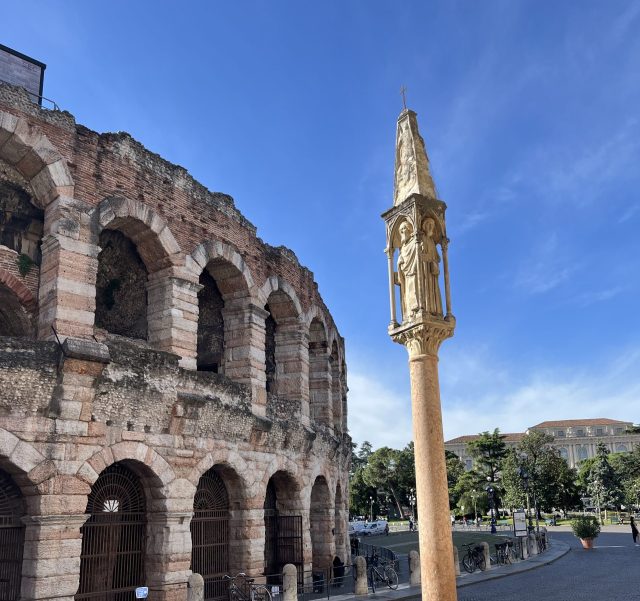
As Harry Lime said in The Third Man: “In Italy for 30 years under the Borgias they had warfare, terror, murder, and bloodshed, but they produced Michelangelo, Leonardo Da Vinci, and the Renaissance. In Switzerland they had brotherly love – they had 500 years of democracy and peace, and what did that produce? The cuckoo clock.”
The Italian wine sector has certainly not had an easy time since last year’s Vinitaly: an increasingly erratic climate combined with concerns about wine’s place on the dinner tables of the younger generation have presented existential problems for the custodians of the grand, millenia-old tradition of Italian wine.
However, as evidenced by the buzz of a packed fair, there are plenty of reasons to be optimistic for the future of the sector. Indeed, just as adverse circumstances helped to produce the great artworks that continue to draw in millions of tourists to Florence, Rome and Venice each year, Italian wine’s recent challenges have arguably breathed new life into the industry.
Virtually there
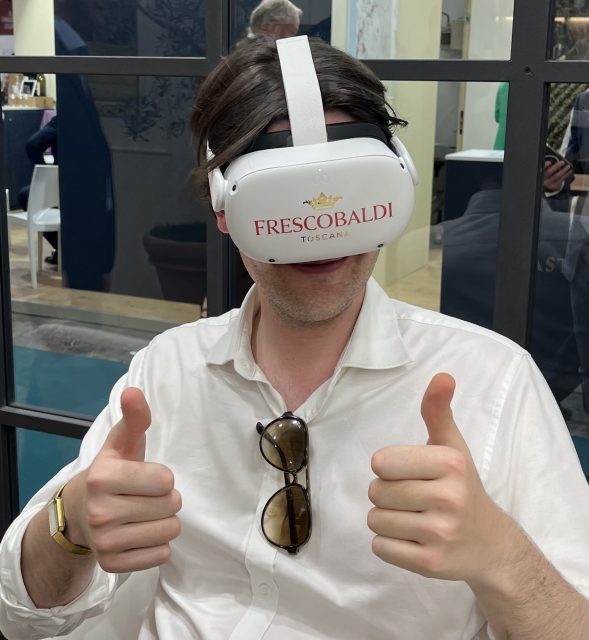
While virtual reality technology, such as Apple’s Vision Pro and the Meta Quest, is still yet to find its feet in day-to-day life, there are some in the wine industry who believe that it could be highly useful when applied to tourism.
Among those utilising it was Bolgheri’s Campo alla Sughera. Winery director Tommaso Alessandri explained that the purpose of the 360-degree video was to create “the feeling of being there” in the vineyards and winery, particularly during times when visitors might not necessarily be permitted to come, such as during picking or sorting.
“We still don’t have the infrastructure of Napa Valley in Bolgheri,” he remarked when explaining how VR can address the issue of an inability to accommodate more visitors.
Also utilising it on its stand was Tuscan wine giant Frescobaldi, with a similar problem of limited space for tourists cited, even with its extensive portfolio of estates in the region.
From an educational point of view, so to speak, VR offers the advantage of allowing people, whether they are WSET students or just enthusiasts, to clearly see how a winery works without needing to go there – the problem with wineries is they do tend to be off the beaten track. Alessandri joked when it was noted that he could be seen in some of the videos: “We don’t pay actors!”
Of course, a headset cannot adequately replace a real visit, but it would not be surprising to see more and more producers using them at shows such as Vinitaly to virtually take visitors to their stand to their vineyards and wineries. The main problem is that, in a trade show setting, there is the added hazard of knocking over glasses.
La Place is the place
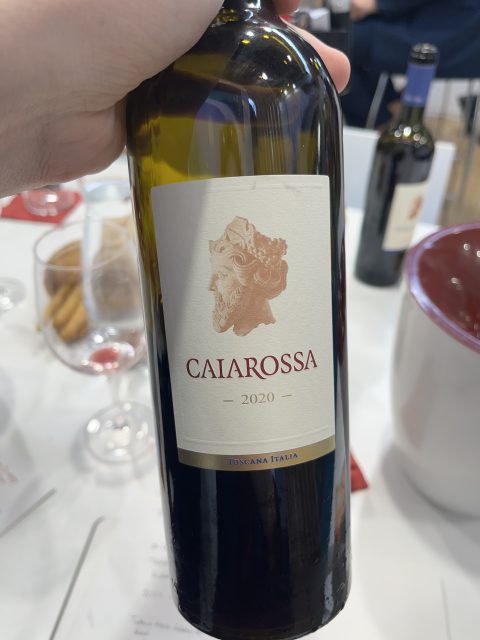
La Place de Bordeaux is becoming a truly international affair, with Californians, Chileans and, of course, Italians securing much coveted spots – and it doesn’t look like interest in these wines will be dying down anytime soon.
Joining the marketplace in 2017 with its 2013 vintage of its eponymous flagship wine, Caiarossa, from Riparbella, on the Tuscan coast, has made a name for itself through its combination of Bordeaux varieties, such as Cabernet Sauvignon and Petit Verdot, with Rhône ones like Grenache and Syrah, across its 40ha of biodynamically-cultivated vines. The estate’s link to Bordeaux comes from the fact that its founder, the late Eric Albada Jelgersma, also owned Château Giscours in Margaux.
“Entering La Place had a huge impact on the winery,” said vineyard manager Francesco Villa. “We had a link thanks to the property in Bordeaux, and they knew how it worked. It’s completely changed how we sell wine – it helps us to have more visibility across the world, from Africa to New Zealand.”
However, while he noted that “a lot of wineries” ring Caiarossa to “ask how the négociant system works”, Villa is unsure if it’s what’s best: “I don’t know if it’s really good for it to have too many international wines on it.”
But, given the prestige La Place de Bordeaux commands, there seems to be little sign of the Italian invasion slowing down.
Lower and lower
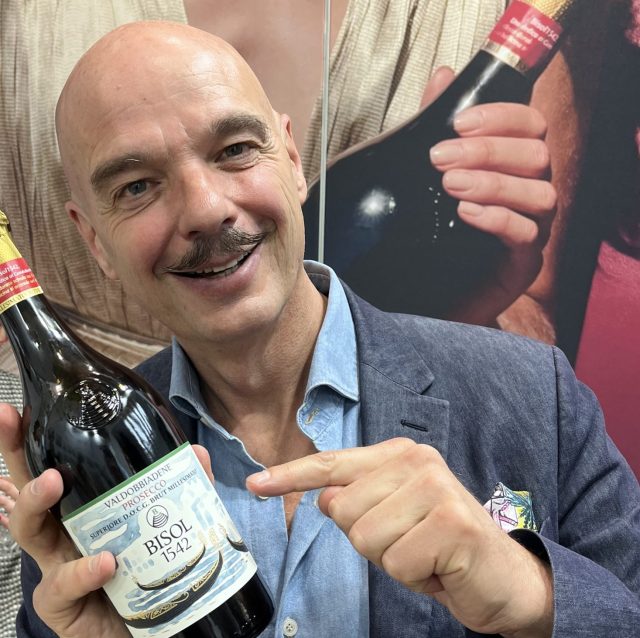
Producers striving for lower alcohol levels is, it seems, an increasingly common practice in the wine trade – whether in an effort to appeal to more ‘health conscious’ consumers, or a way to get around the new UK duty system, where wine is taxed according to its ABV.
However, for famed Prosecco producer Bisol 1542, part of Gruppo Lunelli, the motivation behind its new 10.5% ABV I Gondolieri Prosecco Superiore di Valdobbiadene 2023 comes from a rather different place.
“Reaching 10.5% was not our first target,” president Gianluca Bisol revealed. “Our first was to produce a Prosecco without added sugar.”
Classified as Brut, it is at the bottom limit for permitted alcohol content for the DOCG. Despite its relative dryness, at 11g/l, and low alcohol, Bisol 1542 sought “maximum sugar in the grapes” and a “line of acidity”.
One factor that made this possible was the Cartizze (sandstone and moraine) content of the soils. “You can pick the grapes 10-12 days later when they are grown on Cartizze without them losing acidity,” Bisol explained. “Cartizze is for Glera what Montrachet is for Chardonnay.”
At present, I Gondolieri is, according to Bisol 1542, the Brut with the lowest alcohol in the appellation, but it might not be long before other Prosecco players follow suit. Bisol noted that “people look for healthier wines”, and given that 1g of alcohol is roughly equivalent to 7kcal, a reduction in ABV, without coming at the expense of flavour, may well be something that consumers are after.
Slashing sulphites
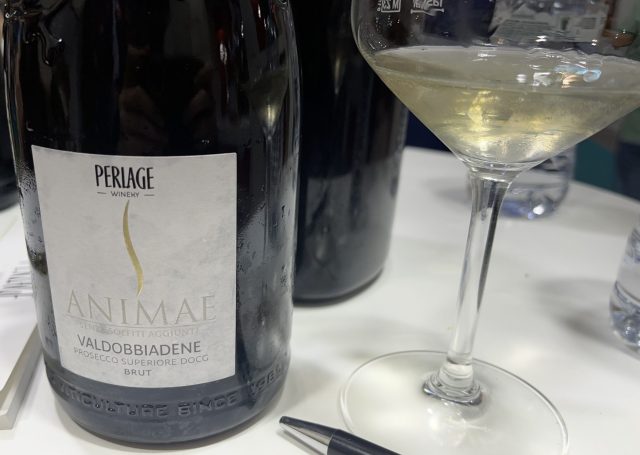
In a similar vein to cutting down on alcohol content in Prosecco, at least one producer is pushing the boundaries when it comes to another aspect of the wine.
In addition to those produced during fermentation, adding sulphites plays a crucial role in preventing wine from spoiling, but, according to some estimates, about one in 100 people are allergic to them.
“There are people who don’t want sulphites because they can’t have them,” explained Anna Nardi of Perlage, “and then there are people like me who want different expressions of the same grape.”
Perlage Animae is the first organic Prosecco Superiore di Valdobbiadene to be produced using a novel strain of yeast that doesn’t produce sulphites during fermentation. They’re also capable of working anaerobically, thus reducing the risk of oxidation and the need to add sulphites during the winemaking process.
Tastewise, it definitely veers towards the funkiness of a natural wine, but the fruit and freshness is not overpowered by farmyard flavours.
However, Nardi suggested that, with production at 8,000 bottles (Perlage overall produces in excess of two million across its range), Animae is still a “niche” product, and one that might not necessarily appeal to the regular Prosecco drinker: “You cannot put it in the middle of the table and say ‘I bought Prosecco’ – they won’t recognise it!”
A wine such as this will, as Nardi pointed out, have greater appeal for the enthusiasts seeking curiosities, but it will be interesting to consider if other Prosecco producers decided to add their own spin on this unique style of sparkling to their portfolios.
All roads lead from Rome

Reportedly the second most visited city in the European Union, just behind Paris, Rome is certainly not facing a shortage of tourists, attracting a record 35 million last year – but how many of those go beyond the Eternal City during their holiday?
International recognition is a problem for the wider region of Lazio, and for its wine producers.
“If I ask 100 British people to name a wine from Lazio, 90 of them will say Frascati,” said Luigi Tana, director of I Ciacca, in Picinisco. “We want to promote the region, the valley, and the Maturano grape – the brand is the fourth thing.”
One of I Ciacca’s assets when it comes to attracting visitors, Tana explained, is that it is on the route between Rome and Naples, making it either a good stopover, or a base for further exploration of this chunk of Italy.
Estates like this also present advantages for those who do want to see the Colosseum and drop by the Vatican, but don’t necessarily want the full Roman experience the whole time they are there.
“We are very close to Rome,” explained Steffano Matturro, who co-founded wine estate L’Avventura just over a decade ago. “This is good for people who don’t want to stay in the city.”
At present, L’Avventura has six rooms where guests can stay, a restaurant and a “wine resort”. What we do on holiday echoes in our future wine choices when we get back home.
Local heroes
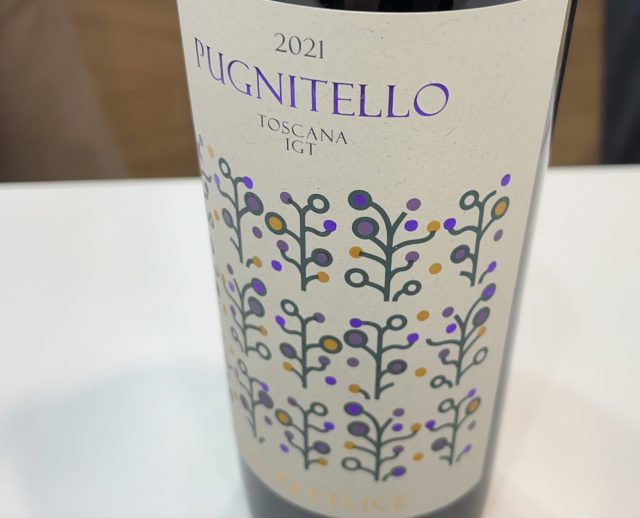
Lazio’s strong tradition of hyper-local grape varieties is a double-edged sword in some ways, as it is a challenge to explain and, more crucially, sell wines made from them to consumers who will be unfamiliar with them.
This is very much Italy’s problem overall: with more than 2,000 indigenous grapes, and some estimates suggesting substantially more, these niche varieties need producers to champion them, like I Ciacca has done with Maturano in Lazio.
One Tuscan supporter of an often-overlooked grape is San Felice, which has been a proponent of Pugnitello. Literally translating to ‘little fist’, a reference to the tightness of its bunches, the name also alludes to what it brings to a wine – concentrated tannins and acidity.
Sales and marketing director Francesco Da Alessi shared that the producer, which has three estates in Tuscany (Chianti Classico, Montalcino and Bolgheri) first planted Pugnitello in 2000, with the first vintage of its Toscana IGT Pugnitello coming six years later.
“In every single wine there is now some Pugnitello,” he said – one such wine is San Felice’s Vigorello, a wine it has produced since 1968. The 2020 vintage contains 40% Pugnitello, with the remainder being Cabernet Sauvignon, Merlot, and a small splash of Petit Verdot.
While explaining this black fruit and smoke-scented berry is, in De Alessi’s words, “extremely difficult”, it is not falling on deaf ears: “We can see there is an interest [in Pugnitello] in the US, Switzerland and Japan for instance – Italy is the main market for it, of course…It’s up to us how much we want to communicate it.”
Local grapes aren’t one trick ponies either. Albana, a white variety grown in Emilia-Romagna, is capable of producing high quality dry and passito wines, and even, as is the case with the Vitalba Albana in Anfora, amphora-aged orange wines. So, whatever the market determines is going to be the next big style, Italy has grapes capable of making it.
Promising Pinot Noir

One grape that is certainly not a challenge to communicate is Pinot Noir, whether it is being used for the production of still wines or traditional method sparkling – indeed, perhaps the only challenge is whether to call it that or ‘Pinot Nero’. Vinitaly 2024 saw the unveiling of several premium still Pinot Noirs from the north of the country.
Trentino is capable of producing excellent Pinot Noir, with companies like Cantina Viticoltori Trentini (CAVIT) leading the way there, but other, more unexpected regions are also embracing this grape.
Bricco de Guazzi, Tenute del Leone Alato’s estate in Monferrato used the fair to launch Funtanin, a Piemonte DOC Pinot Nero, so named due to the historic fountain near to the winery.
Picked in 2019 and having spent six months in barrique, Funtanin is, according to a spokesperson, still “a little young – but there is complexity, velvet and tannins.” Given its Piemontese origin, a fitting pairing would be vitello tonnato.
The other northern corner of Italy is also producing Pinot Noir to be reckoned with.
At a packed event held at the Villa Sandi stand, the company presented Euda, a new hyper-exclusive product from its Borgo Conventi estate in Friuli-Venezia Giulia.
Collio has historically been white wine territory, especially those made from Friulano, Ribolla Gialla and Malvasia Istriana – but that norm is being bucked.
“I’ve always hated stereotypes surrounding grapes like Pinot Noir only thriving on certain soils,” declared legendary consulting winemaker Riccardo Cotarella. “Nobody ever tests the truth of these stereotypes…where is the truth that Pinot Noir from Collio cannot be good?”
“I am convinced that the places where you think you will never get something special are those where you will get a nice surprise,” Cotarella continued. “It’s like keeping a prestige car in the garage and never using it!”
“Prestige” is the apt comparison – just 1,200 bottles of Euda, with its Modigliani artwork label, will be made available in September, a further 600 will be kept back for future tastings.
In terms of taste, suggested notes include: goji berry, black pepper, green pepper, cinnamon, vanilla and earth. Its rich tannins and overall boldness make it a far cry from the delicate, lighter Pinot Noir that one might expect. Given the results, it wouldn’t be a shock to see more producers in Collio planting the variety in an effort to make high-end wines.
Clarity of communication
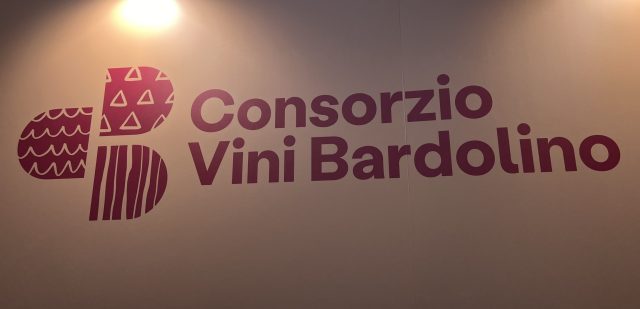
It isn’t just grapes that have to be sold to consumers of course, but regions.
For the Consorzio di tutela del Chiaretto e del Bardolino, which represents this eastern side of Garda, there are some challenges when it comes to promoting the brand.
Consorzio president Fabio Dei Micheli pointed out that the appellation, which produces 10 million bottles of rosé and 11 million of red per year, has come on leaps and bounds: “Year by year, our producers increase in quality.”
To reflect this, and the climatic conditions that make the area what it is, the consorzio unveiled its rebrand at Vinitaly, with the three parts representing the influence of the mountains, the Mediterranean climate of the lake, and the continentality. The shape, as well as spelling out the initials, is also intended to evoke the archways of many of the area’s historic buildings. In one icon there are three climatic elements and a nod to the past.
According to Dei Micheli, the design received “positive feedback” from fairgoers, suggesting that “changing image is easy to say, but not to do”.
“We have to speak about the land and the people – they make the wine,” he argued.
But of course, a logo can only help so much. An aspect of Italian wines doing well in English-speaking markets that is seldom talked about is how easy it is to pronounce the names – there’s a reason why ‘Gavi’ flies off the shelves. Dei Micheli jokes that ‘Chiaretto’ could be pronounced “She-a-retto, like Chardonnay!”
Back to the future?
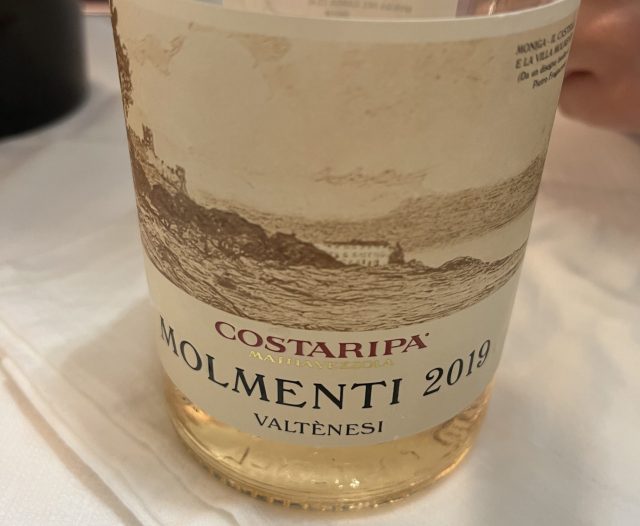
But perhaps Italy’s wine sector doesn’t have to do anything new in order to maintain its position – perhaps its greatest strength is its adherence to traditions.
Valtenesi on the western shore of Lake Garda has produced rosé since the late 19th century, and one of the custodians of that tradition is Costaripa.
Nicole Vezzola, the next generation of the family to take the reins of Costaripa, suggested that pink wine is as integral to Valtenesi as red wine is to Barolo. In the case of Costaripa, the grapes it uses for its Rosa Mara are Groppello, Marzemino, Sangiovese, and Barbera.
These same varieties are also utilised in its Molmenti, but whereas Rosa Mara is designed, like so many rosés, for earlier drinking, Molmenti goes at an altogether different pace.
“The most important variable in the wine industry is time,” explained Vezzola when tasting the 2019 vintage of Molmenti that was unveiled at Vinitaly. Three years in tonneaux and the remainder in bottle ageing lend the wine huge complexity, with Vezzola pointing to notes of dates, almonds, and liquorice root.
“Why would we use perfectly healthy red grapes that we invest 380 hours per hectare per year into, to make a wine that lasts a year? The only barrier is the colour.”
In the case of Molmenti, which takes its name from Pompeo Gherardo Molmenti, the Venetian senator credited with starting rosé production in Valtenesi, and has been produced by Costaripa since 1992, Vezzola estimated that the 2019 vintage has a 20-25 year lifespan.
A stopped clock is right twice a day, and an old tradition can easily become desirable for consumers again if the market wills it. Wines such as Molmenti aren’t particularly new, but they still have a part to play in the ongoing development of Italian wine.

